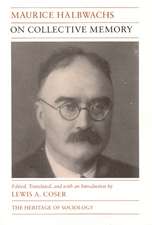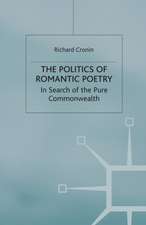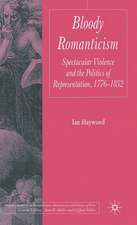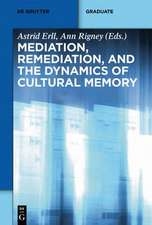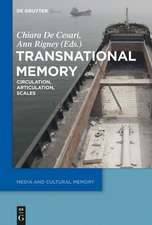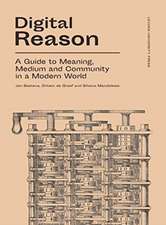The Calamity Form: On Poetry and Social Life
Autor Professor Anahid Nersessianen Limba Engleză Paperback – 12 aug 2020
Anahid Nersessian explores works by Friedrich Hölderlin, William Wordsworth, John Keats, and others to argue that as the human and ecological costs of industry became clear, Romantic poetry adopted formal strategies—among them parataxis, the setting of elements side by side in a manner suggestive of postindustrial dissonance, and apostrophe, here an address to an absent or vanishing natural environment—as it tried and failed to narrate the calamities of capitalism. These tropes reflect how Romantic authors took their bewilderment and turned it into a poetics: a theory of writing, reading, and understanding poetry as an eminently critical act. Throughout, Nersessian pushes back against recent attempts to see literature as a source of information on par with historical or scientific data, arguing instead for an irreducibility of poetic knowledge. Revealing the ways in which these Romantic works are of their time but not about it, The Calamity Form ultimately exposes the nature of poetry’s relationship to capital—and capital’s ability to hide how it works.
Preț: 168.91 lei
Nou
Puncte Express: 253
Preț estimativ în valută:
32.32€ • 33.54$ • 27.02£
32.32€ • 33.54$ • 27.02£
Carte disponibilă
Livrare economică 24 februarie-10 martie
Livrare express 07-13 februarie pentru 21.32 lei
Preluare comenzi: 021 569.72.76
Specificații
ISBN-13: 9780226701318
ISBN-10: 022670131X
Pagini: 240
Ilustrații: 10 halftones
Dimensiuni: 152 x 229 x 15 mm
Greutate: 0.3 kg
Ediția:First Edition
Editura: University of Chicago Press
Colecția University of Chicago Press
ISBN-10: 022670131X
Pagini: 240
Ilustrații: 10 halftones
Dimensiuni: 152 x 229 x 15 mm
Greutate: 0.3 kg
Ediția:First Edition
Editura: University of Chicago Press
Colecția University of Chicago Press
Notă biografică
Anahid Nersessian is associate professor of English at the University of California, Los Angeles. She is the author of Utopia, Limited: Romanticism and Adjustment and coeditor of the Thinking Literature series, published by The University of Chicago Press.
Cuprins
Introduction
Chapter One: Parataxis; or, Modern Gardens
Chapter Two: Wordsworth’s Obscurity
Chapter Three: Keats and Catachresis
Chapter Four: Apostrophe: Clouds
Epilogue
Chapter One: Parataxis; or, Modern Gardens
Chapter Two: Wordsworth’s Obscurity
Chapter Three: Keats and Catachresis
Chapter Four: Apostrophe: Clouds
Epilogue
Acknowledgments
Notes
Index
Notes
Index
Recenzii
"Reading this always arresting, often startling study feels a little like reading a poem by Donne; unlike things and scales of attention get pressed together to yield a new kind of understanding, at once intellectual and emotional. . . . [The Calamity Form] is a page-turner, the likes of which I can’t remember encountering. Reading Nersessian is like talking to a person of enormous intelligence, originality, creativity, energy, wit, confidence, and style who also works to make herself unknowing enough—vulnerable, susceptible enough—to channel the unheard melodies of the best known of Romantic era poems."
"The Calamity Form injects a Marxist soul into Deconstruction’s veins. . . [The Calamity Form] is thoroughly a book of the present and is poised to become a touchstone of contemporary Romantic studies."
"The Calamity Form gives a compelling demonstration of how we might have our formalist cake and eat history too. . . . Formalism doesn’t mean a total sidelining of the historical, but a commitment to studying how literature creates structures that are abstracted from the world. . . . The Calamity Form is a work of Marxist criticism whose key tenet and admirable example is to call for Marxist critics to do their jobs carefully: to use the tools of formal analysis to make precise, ambitious claims about how texts mediate the conditions of their composition."
"Nersessian reads promiscuously, in the best sense, across disciplines, traditions, and languages. It's a densely crafted book fairly brimming with ideas—there is action on every page—and it's written with brio and an almost Pynchonesque vocabulary. . . . Nersessian’s prose takes risks and in a small way is commensurate with the excesses she charts so well
in Keats or with which she rhymes in Adorno. It is likely we will be coming to terms for years to come with this distinctive foray into clouds of unknowing."
in Keats or with which she rhymes in Adorno. It is likely we will be coming to terms for years to come with this distinctive foray into clouds of unknowing."
"Calamity form is simply 'a caution against taking the heroic possibilities of literature too seriously.' That leaves plenty more to take seriously, chiefly the experience of these texts, which Nersessian both plumbs and re-creates with erudition, verve, extraordinary intelligence, and a literary mind par excellence."
"Nersessian brings a new and deeper understanding to Romantic poetry’s response to capitalism, but she also includes discussions of 20th- and 21st-century visual media. Because of this range and the author's attentive 'thinking about the limits of historical materialism for literary study', this probing, erudite study will appeal to scholars interested in such subjects as formalism, ecocriticism, Marxist theory, and literary theory as well as to those who study literature."
“Acute, lyrical, beautifully researched, and crisply argued, The Calamity Form tracks the ‘slender promise’ of momentary solace Romantic poetry made in the face of early nineteenth-century capitalism. Though Nersessian ratchets down the claims that have been made on the poetry’s behalf, she neither imagines it as simply making peace with the world as it was, or as guilty of the failure to change it. Instead, The Calamity Form sees in its archive a myriad of subtle openings onto possible futures, offering not a solution to capitalism but a range of wary, vigilant attitudes toward it, probing something like what Nersessian suggests Keats thought was ‘the upside of degradation.’ It is a powerful book.”
“To name the Industrial Revolution as ‘the calamity form’ is to begin at the end, at the birth of a total transformation that will promise planetary death. This book intervenes into an astonishing multiplicity of debates: poetry and its scholarship, ecocriticism, the matter of capital, literary theory, and more. It renovates Romanticism and takes its place in the blossoming field of Marxist poetics. But perhaps most of all it is a demand, careful and clear, that we unmake the world that gave us this calamity and the calamity that gave us this world. At this late date, a romantic communism is no longer possible; a communist romanticism herein makes its return.”
"Anahid Nersessian's star has ascended at a pace almost unheard of in our contemporary moment, where ambitious theory is mostly in abeyance, and the sheer glut of publications, to say nothing of our deracinated academic labor market, makes it nigh impossible to gain a hearing beyond one’s narrow disciplinary specialism. Nersessian stands out in part because hers is a critical voice that often enough refuses the scholarly commonplaces of our age, not least an adherence to positivist notions of 'context' and the 'archive.' Of her three monographs to date, The Calamity Form is, I think, the best."



